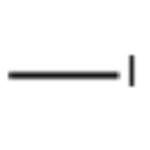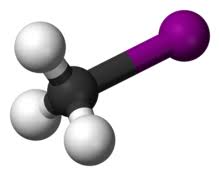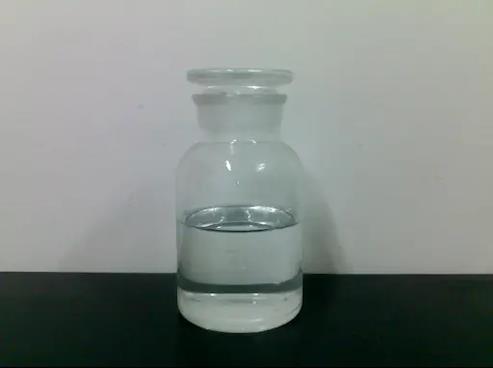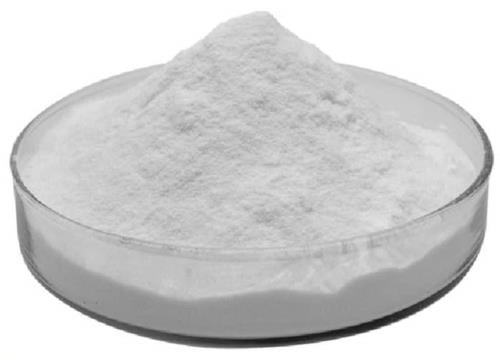Iodomethane: Properties, Applications and Toxicities
General Description
Iodomethane, commonly called methyl iodide and commonly abbreviated "MeI", is the chemical compound with the formula CH3I. This dense volatile liquid is related to methane by replacement of one hydrogen atom by an atom of iodine and its dipole moment is 1.59 D. Refractive index is 1.5304 (20 °C, D), 1.5293 (21 °C, D). It is miscible with common organic solvents. It is colourless, although upon exposure to light, samples develop a purplish tinge caused by the presence of I2. Storage over copper metal absorbs the iodine. Iodomethane is widely used in organic synthesis to deliver a methyl group, via the transformation called methylation. It is naturally emitted by rice plantations in small amounts.1

Figure 1. Properties of Iodomethane
Chemical properties
Iodomethane is an excellent substrate for SN2 substitution reactions. It is sterically open for attack by nucleophiles, and iodide is a good leaving group. For example, it can be used for the methylation of phenols or carboxylic acids. In these examples, the base (K2CO3 or Li2CO3) removes the acidic proton to form the carboxylate or phenoxide anion, which serves as the nucleophile in the SN2 substitution.
Iodide is a "soft" anion which means that methylation with iodomethane tends to occur at the "softer" end of an ambidentate nucleophile. For example, reaction with thiocyanate ion favours attack at S rather than "hard" N, leading mainly to methyl thiocyanate (CH3SCN) rather than CH3NCS. This behavior is relevant to the methylation of stabilized enolates such as those derived from 1,3-dicarbonyl compounds. Methylation of these and related enolates can occur on the harder oxygen atom or the (usually desired) carbon atom. With iodomethane, C-alkylation nearly always predominates.
Iodomethane is also an important precursor to methylmagnesium iodide or "MeMgI", which is a common reagent. Because MeMgI forms readily, it is often prepared in instructional laboratories as an illustration of Grignard reagents. The use of MeMgI has been somewhat superseded by the commercially available methyl lithium.
In the Monsanto process, Iodomethane forms in situ from the reaction of methanol and hydrogen iodide. The iodomethane then reacts with carbon monoxide in the presence of a rhodium complex to form acetyl iodide, the precursor to acetic acid after hydrolysis. Most acetic acid is prepared by this method.
Iodomethane hydrolyzes at 270 °C forming hydrogen iodide, carbon monoxide and carbon dioxide.2
Applications
Methylating agent
Iodomethane is an excellent reagent for methylation, but there are some disadvantages to its use. It has a high equivalent weight: one mole of MeI weighs almost three times as much as one mole of methyl chloride. However, the chloride is a gas (as is methyl bromide), making it more awkward to work with than liquid Iodomethane. Methyl chloride is a poorer methylating reagent than MeI, though it is often adequate.
Iodides are generally expensive relative to the more common chlorides and bromides, though iodomethane is reasonably affordable; on a commercial scale the toxic dimethyl sulfate is preferred, since it is both cheap and liquid. The iodide leaving group in Iodomethane may cause side reactions, as it is a powerful nucleophile. Finally, being highly reactive, Iodomethane is more dangerous for laboratory workers than related chlorides and bromides. When considering alternatives to Iodomethane, it is necessary to consider cost, handling, risk, chemical selectivity, and ease of reaction work-up.3
Pesticide
Iodomethane is a pre-plant biocide used to control insects, plant parasitic nematodes, soil borne pathogens, and weed seeds. The compound is registered for use as a preplant soil treatment for field grown strawberries, peppers, tomatoes, stone fruits, tree nuts, grape vines, ornamentals and turf and nursery grown strawberries, stone fruits, tree nuts, and conifer trees.4
Preparation
Iodomethane is formed via the exothermic reaction that occurs when iodine is added to a mixture of methanol with red phosphorus:
5CH3OH + P + 2.5I2 → 5CH3I + H3PO4 + H2O
The iodinating reagent is phosphorus triiodide that is formed in situ. Alternatively, it is prepared from the reaction of dimethyl sulfate with potassium iodide in the presence of calcium carbonate:
(CH3O)2SO2 + KI → K2SO4 + 2CH3I
The iodomethane can easily be purified by distillation followed by washing with Na2S2O3 (to remove iodine) and then water, aq. Na2CO3.
Iodomethane can be formed during nuclear accidents by the reaction of organic matter with the "fission iodine".5
Toxicity and Toxicikinetics
Acute Neurotoxicity
In an acute neurotoxicity study in rats, iodomethane was administered via the inhalation route (whole body) to 12 rats/sex/group at concentrations of 0, 27, 93, or 401 ppm for 6 hours. The NOAEL is 27 ppm (HEC = 10 ppm for both bystander and occupational risk assessments). The LOAEL is 93ppm based on clonic convulsions, decreased body temperatures, and decreased motor activity.6
Chronic toxicity and carcinogenicity
In an 18-month dietary carcinogenicity study, groups of ICR mice were exposed to microencapsulated iodomethane. Mortality was not affected by iodomethane treatment. Bodyweights were significantly decreased in both sexes at and above 28 mg/kg bw/d. The main effects were on the thyroid and cervix. Treatment-related enlargement of the thyroid was observed in animals of both sexes, with histopathological correlates of increased colloid, cytoplasmic vacuolation, and follicular cell hyperplasia. Fibromas observed in females at the highest dose were not considered to be associated with treatment due to their low incidence, microscopic size, absence of precursor lesions, benign appearance, and lack of evidence of progression to malignancy. The NOAEL for non-neoplastic effects in this study was 8 mg/kg bw/d, based on decreased bodyweight gain and food consumption. The NOAEL for carcinogenic effects was 28 mg/kg bw/d, based on neoplastic lesions observed in the thyroid glands (males), and cervix at 84 mg/kg bw/d. Iodomethane was not considered to be carcinogenic in mice under the conditions of the study.6
Toxicity of metabolites and/or impurities
S-methyl glutathione appears to be the primary metabolite of iodomethane metabolism, which undergoes further metabolism to S-methyl cysteine, methylthioacetic acid, and finally to carbon dioxide. Several other metabolites, including N-(methylthioacetyl) glycine, S-methylglutathione, and methylmercapturic acid were identified in urine. Around 45 to 60% of an oral or inhalation dose was eliminated as carbon dioxide within 48 hours. The only reported impurity in the DoC for iodomethane is methanol at <1%. The reported metabolites and impurities in iodomethane are not considered to be of toxicological concern.6
Pharmacokinetics
Iodomethane is absorbed via both inhalation and oral routes, and widely and rapidly distributed amongst tissues. Immediately following oral dosing, the concentration of iodomethane in tissues (except the GI tract and liver) in rats and rabbits, was lower than levels observed in the blood. Iodomethane concentration in the blood was dose-related, with a bi-exponential elimination rate. For the initial phase, which lasted approximately 4 to 12 hours post exposure, the half-life of Iodomethane ranged from 5 to 7 hours. For the terminal phase, which was taken as 24 hours post-exposure, the half-life ranged from 116 to 136 hours. About 50 to 60% of the oral dose, and about 40 to 47% of the inhalation dose was eliminated as carbon dioxide within 48 hours. Urinary elimination (over 168 hours) accounted for 30 to 35% of the administered dose, regardless of the dose level, or route of exposure. The primary metabolite of iodomethane metabolism appears to be S-methyl glutathione, which undergoes further metabolism to S-methyl cysteine, methylthioacetic acid, and finally to carbon dioxide. Several other metabolites were identified in urine including N-(methylthioacetyl) glycine, S-methylglutathione and methylmercapturic acid.7
Metabolism
A rat metabolism study comparing absorption after oral and inhalation administration indicated that iodomethane is quickly absorbed through both routes of exposure. In contrast, the elimination profile indicates that excretion of 14C-labeled iodomethane is biphasic with an initial half-life of 5-7 hours and a terminal half-life of approximately 116-136 hours.8
References
1. K. R. Redeker, N.-Y. Wang, J. C. Low, A. McMillan, S. C. Tyler, and R. J. Cicerone (2000). "Emissions of Methyl Halides and Methane from Rice Paddies". Science 290: 966-969. doi:10.1126/science.290.5493.966.
2. Avila-Zárraga, J. G., Martínez, R. (2001). "Efficient methylation of carboxylic acids with potassium hydroxide/methyl sulfoxide and iodomethane". Synthetic Communications 31 (14): 2177 - 2183.
3. King, C. S.; Hartman, W. W. (1943). "Methyl Iodide". Org. Synth.; Coll. Vol. 2: 399.
4. "EPA approves new pesticide despite scientists' concerns", Los Angeles Times, October 6, 2007.
5. Johnson, M. K. (1966). "Metabolism of iodomethane in the rat". Biochem. J. 98: 38-43.
6. March, J. (1992). Advanced Organic Chemistry, 4th Edn., New York: Wiley. ISBN 0-471-60180-2.
7. Sulikowski, G. A.; Sulikowski, M. M. (1999). in Coates, R.M.; Denmark, S. E. (Eds.) Handbook of Reagents for Organic Synthesis, Volume 1: Reagents, Auxiliaries and Catalysts for C-C Bond Formation New York: Wiley, pp. 423–26.
8. Bolt H. M., Gansewendt B. (1993). "Mechanisms of carcinogenicity of methyl halides.". Crit Rev Toxicol. 23 (3): 237-53.
);You may like
Related articles And Qustion
Lastest Price from Iodomethane manufacturers

US $100.00-1.00/KG2024-03-25
- CAS:
- 74-88-4
- Min. Order:
- 1KG
- Purity:
- 99%
- Supply Ability:
- g-kg-tons, free sample is available

US $1.00/kg2024-02-27
- CAS:
- 74-88-4
- Min. Order:
- 1kg
- Purity:
- 99%
- Supply Ability:
- 200-819-5




